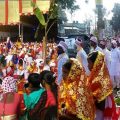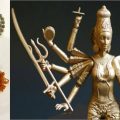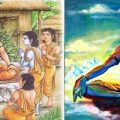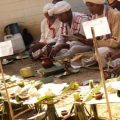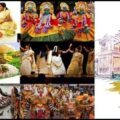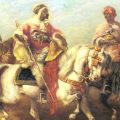Nuakhai Juhar: Odia Festival that Traces Its Origin to Vedic Pralambana Yajna
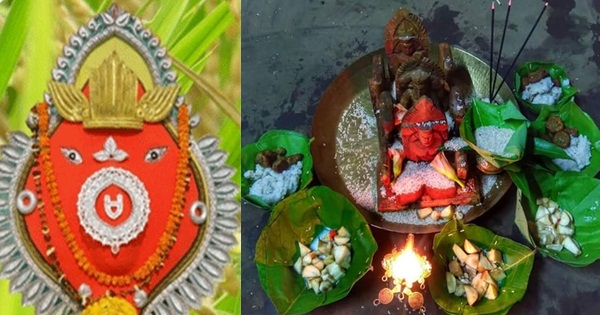
One day after the celebration of the Ganesh Chaturthi, Odisha celebrates a civilization-old tradition that has its root in the Vedic period. The festival, which is celebrated throughout the state of Odisha, more precisely in the western Odisha, is observed on the panchami tithi (fifth day) of lunar fortnight of Bhadrava (August-September), the day after Ganesh Chaturthi. The festival is known as “Nuakhai Juhar” where “Nua” means new and “Khai” means food, where food actually means “the new rice”. The word Nuakhai thus often resembles “the eating ceremony of the new rice”. The Nuakhai festival thus celebrates the newly harvested food grown by the farmers.
The reason why Nuakhai is celebrated throughout Odisha is that it is celebrated by both the tribal people as well as the caste-Hindus. The important and main tribes of Odisha like Binjhal, Bhumia, Gond, Kondh, Mirdha, Saura/Savara, etc. are settled agriculturists.
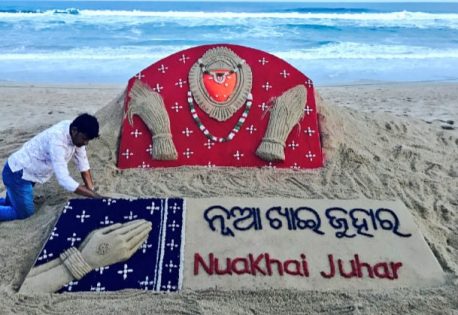
Sand artist Sudarsan Pattnaik’s creation of Sand Maa #Samaleswari with a message Nuakhai Juhar at Puri beach
Nuakhai is not a pretentious celebration. It is not just an exhibition of tradition, either. It is a festival of worship of food grain. It encourages a profound appreciation and admiration for the growth of rice, which according to the Odias, is a symbolic manifestation of the life itself.
The Nuakhai festival traces its origin to the Vedic period where the sages or Rishis used to talk about Panchajanya- the five important activities in the annual calendar of an agrarian society. These five activities have been specified as:-
1. Sita yajna (the tilling of the land),
2. Pravapana yajna (the sowing of seeds),
3. Pralambana yajna (the initial cutting of crops),
4. Khala yajna (the harvesting of grains),
5. Prayayana yajna (the preservation of the products).
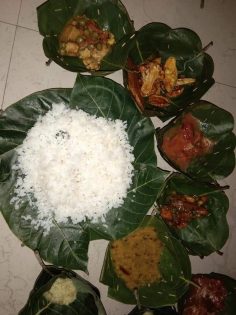
In view of this, Nuakhai may be seen as having evolved out of the third activity, namely pralambana yajna which involves cutting of the first crop and reverent offering of the same to the mother Goddess, thus followed in Nuakhai festival.
Although the festival saw some discontinuity for some centuries, the continuous oral tradition of this festival dates back to 12th century A.D. when this festival was celebrated by Chauvan Raja Ramai Deo at Patanagarh, currently known as Bolangir district of Odisha. The king knew the relevance of agriculture for the economic development of the state and hence the celebration of Nuakhai festival promoted the agrarian way of life in the Western Odisha region instead of the previously practiced hunting and gathering.
Nuakhai Festival follows the same legacy of “Jai Jawan Jai Kisaan” (Lal Bahadur Shashtri is a revered figure in Western Odisha) which gives the present society a great message of the relevance of agriculture in the economic of the country and the role of farmers in building the nation. Hence, the development of farmers should be the key to the development of nation.
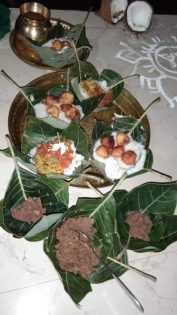
As per the tradition, earlier farmers were celebrating Nuakhai on a fixed day designed by the village headman and priest. Afterward, under the patronage of royal families, this simple festival was altered into a mass socio-religious event in the entire western Odisha.
Nuakhai is a celebration that speaks of an intense ritual where people of western Odisha start their life once again afresh. It gives a fresh lease of life to the tillers of the landon the assurance of anna. For prana without anna, is absurd and unthinkable.
Since paddy is the staple food of the people in general, the rice crops sustain their hope and determine their fate. This is why, a non-agriculturist is also that much concerned about this ritual as a cultivator is. Customarily, each farmer offers the first grain of the harvest to the Mother Goddess and then pertakes it. The significance and utility of anna or rice in daily life of Odia people is easily understandable from the Hindu sacred texts, which I the paddy as a synonym of life itself (Pasayat, 2003, 2006, 2007):
Anna Brahmeti Hyajanat,Annadeva Khalwani Bhutani Jayante, Annena Jatani,Annam Prayantyabhisam Bishantiti.
(Meaning: The other name of anna is Brahma who is Iswara i.e. God. In this sense, anna is Iswara or God. Each life is born out of anna. It is the source of energy. After death, jiba or anything having a life, transforms into anna for others. So, the importance of anna is appreciated in every stage of life. For this reason, it is the source of life, happiness and a part of soul).
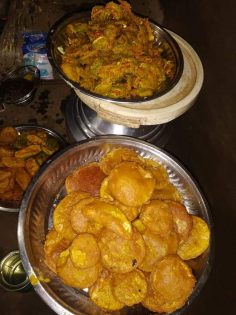
Ahamanna Mahamanna Mahamannam,Ahamannado Ahamannado Ahamannado,Ahamanna Manna Madantama Drwi
(Meaning: God says that He is anna. I am the only receiver of this anna. Whoever takes Anna I accept that).
Nuakhai celebration starts with the preparation for the festival almost two weeks before the festival. Nuakhai is understood to have nine colours and as a consequence, nine sets of rituals are followed as a prelude to the actual day of celebration starting from “Behrana” to “Nuakhai” and all culminating in Juhar Bhet. In a sequential manner these nine colours include:
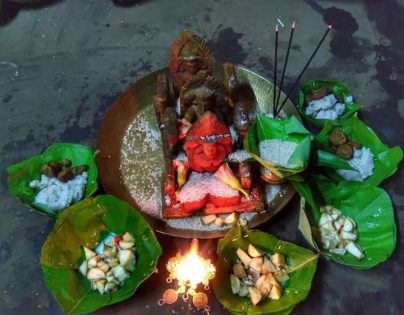
1. Beheren: Announcement of a meeting to set the date,
2. Lagna dekha: Setting the exact date for partaking of new rice,
3. Daka haka: Invitation,
4. Sapha sutura and lipa-puchha: cleanliness,
5. Kina bika : purchasing,
6. Nua dhan khuja: looking for the new crop,
7. Bali paka: final resolve for Nuakhai by taking Prasad (the offering) to the deity,
8. Nuakhai: eating the new crop as Prasad after offering it to the deity, followed by dancing and singing,
9. Juhar bhet: respect to elders & gift transfers.
Images provided by author; 1st left image at the top (featured image) sourced from Google.
Facebook Comments Box
The following two tabs change content below.


Saswat Routroy
Saswat Routroy is a Kolkata-based Software Engineer, pursuing the everlasting quest for knowledge and journey of self discovery.

